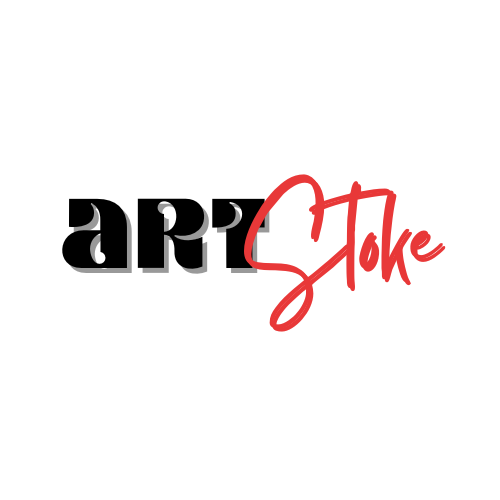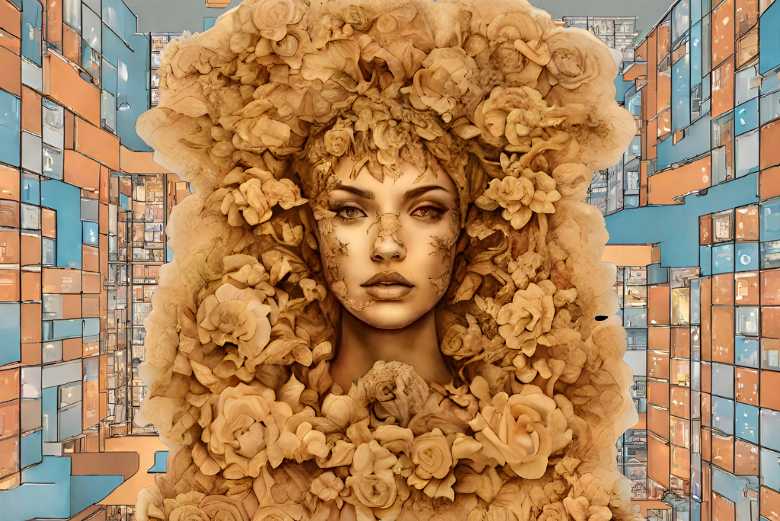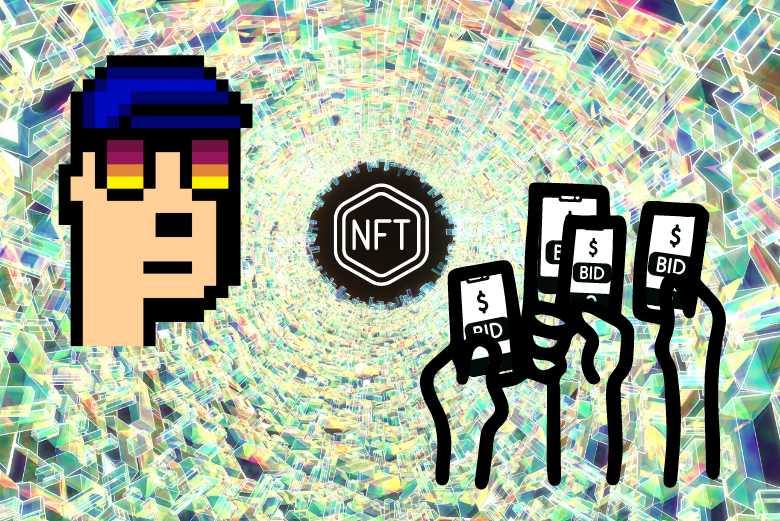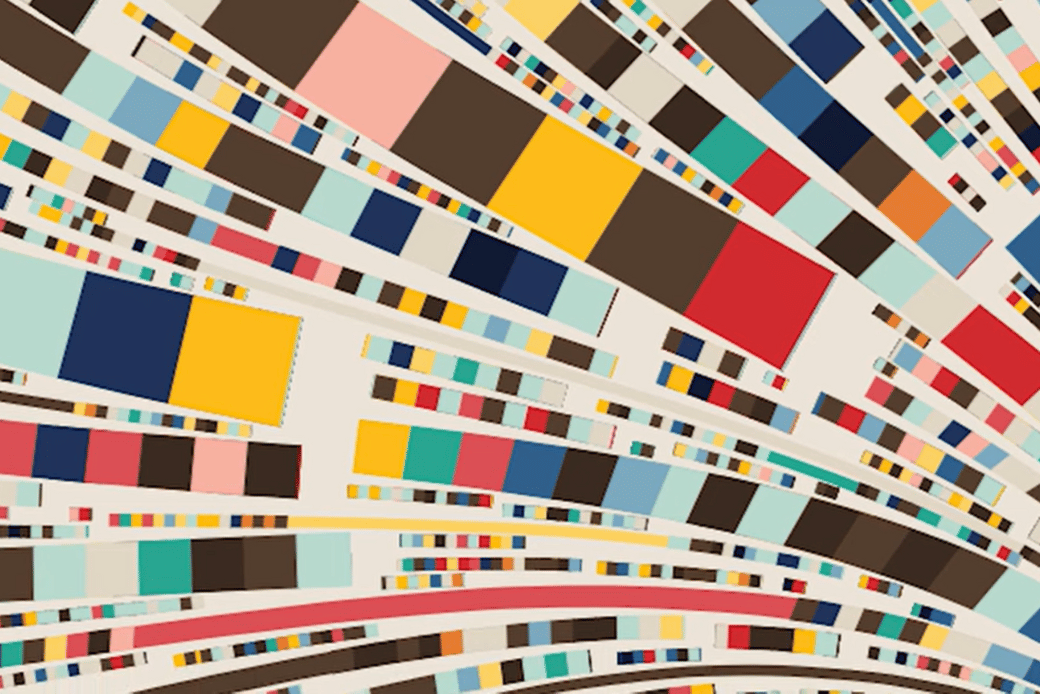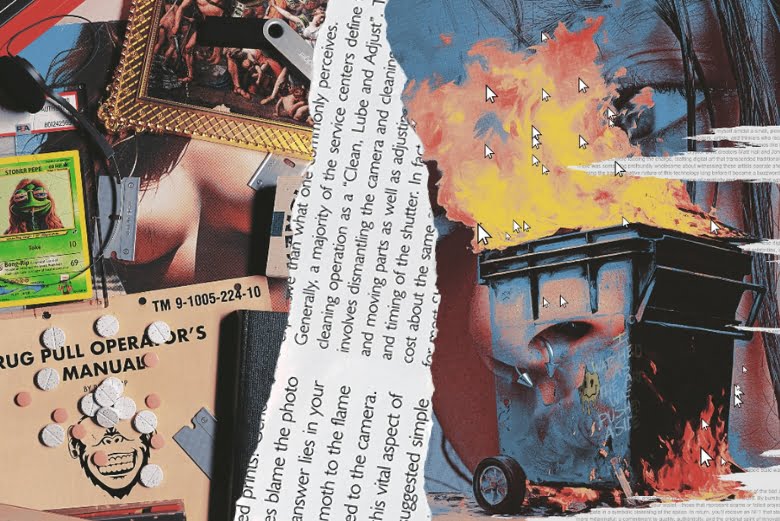Navigating the Crypto-Web3 world as a newcomer is like being sucked into an intergalactic wormhole and spat out into another universe. After accidentally landing on a moon-sized floating space-city, with some luck, you stumble into an airport lounge full of aliens.
NFT artists typically decide where to mint and sell their NFTs based on several factors that can vary depending on their goals, preferences, and the characteristics of the blockchain and NFT marketplace (online gallery).
The future of NFT Marketplaces is to be “blockchain agnostic”, but this is not currently the reality for 99% of NFT Marketplaces. The energy intensive proof-of-work consensus mechanism of the Bitcoin blockchain has given the entire world of Crypto-Web3 a bad reputation. Today, the proof-of-stake (PoS) consensus mechanism, or a variation thereof, is used by all blockchains except Bitcoin. This now means the Web3 platforms use as much energy as Web2 applications like Facebook or Tiktok.
For orientation purposes, here is a general overview of the most popular blockchains (there are 50+) and a list of some of the NFT marketplaces that are native to these blockchains.
A general overview of blockchains and examples of their NFT marketplaces
Ethereum is the most established blockchain for NFTs. There are a wide variety of NFT marketplaces to choose from, catering for different types of NFT artists. The prices of NFTs on Ethereum can be high, but there are affordable options available.
- OpenSea is the world’s first and largest marketplace for NFTs and crypto collectibles.
- SuperRare is known for its high-quality artworks and its curated selection of artists.
- Rarible is known for its low fees and its user-friendly interface.
- Foundation is popular for its community-driven curation process and focus on emerging artists.
- Nifty Gateway is known for its high-profile drops and special projects. It has sold works by artists such as Beeple and Damien Hirst and has just hosted Sam Spratt’s “IX. The Monument Game”.
- Art Blocks specialises in generative and algorithmic art. Their mission is to raise the standards of algorithmic (generative) art.
Solana is a web-scale blockchain that provides fast, secure, scalable, decentralized apps and marketplaces and claims to support 50,000 transactions per second (TPS), making it the fastest blockchain in the world. The gas fees (blockchain processing fees) on Solana are much lower than on Ethereum, making it a more affordable option for artists. The NFT marketplace culture on Solana is still developing, but there are a growing number of online galleries to choose from.
- Magic Eden is the leading marketplace for NFTs on Solana. It is known for its low fees and its fast transactions.
- Solana Art is known for its curated selection of artworks and its focus on emerging artists.
- SolSea is known for its low fees and its user-friendly interface.
- Metaplex is known for its flexibility and its ease of use.
- Digital Eyes is known for its focus on emerging artists and its unique selling propositions, such as its fractional ownership feature.
Cardano is known for its energy efficiency and security which makes it a good choice for artists who are concerned about the environmental impact of NFTs. The NFT culture on Cardano is still in its early stages, but it is growing rapidly.
- CNFT.IO launched in July 2021 is the first and leading marketplace for NFTs on Cardano. It is known for its low fees and its user-friendly interface.
- jpg.store is known for its curated selection of artworks and its focus on emerging artists.
- Mintable is known for its ease of use and its support for multiple blockchains. Mintable lets you create a customised smart contract without having to worry about coding it yourself.
- Kryptomon is a marketplace for digital pets. It allows users to breed and train their pets.
Tezos is a blockchain with a reputation for its scalability and security. This makes it a good choice for NFT artists who are looking for a platform that can handle high volumes of transactions. The NFT culture on Tezos is still developing.
- Hic et Nunc was the first NFT marketplace on Tezos but shut down on 14 November 2021.
- Objkt is the largest and most popular marketplace on the Tezos chain.
- OneOf focuses on music and sports. It is known for its high-profile drops and its focus on sustainability.
- TezAuctions is known for its low fees and its focus on emerging artists.
- Kalamint is popular for its unique selling proposition, which allows users to turn their content (such as files, artwork, music, PDFs, images, etc) into an item that lives on the blockchain by using smart contracts.
BNB Chain is a blockchain that is known for its low gas fees. Binance Smart Chain (BSC) and Binance Chain rebranded to BNB Chain in February 2022
- Binance NFT is the leading NFT marketplace.
- BakerySwap is known for its innovation, low fees and its focus on decentralized finance (DeFi).
- Element, Mobox, and PancakeSwap are becoming increasingly popular.
Flow is a blockchain that is designed specifically for NFTs. This makes it a good choice for developers and artists looking for something more than the standard cookie-cutter options available on your average NFT marketplace. The NFT marketplace culture on Flow is still in its early stages, but it is growing quickly.
- Flow has become a popular place for sporting NFTs, as organizations like the NBA, NFL, UFC and more have launched their own marketplaces on the blockchain. Flow is the host of NBA Top Shot.
- Blocktobay is a popular Flow-native NFT marketplace.
The Worldwide Asset Exchange (WAX) has become a network of choice for digital collectibles and virtual items. WAX has built a reputation for being a home for Web3 gaming. WAX gives its users access to thousands of dApps and a range of NFT marketplaces.
Polygon (formerly known as Matic) is another blockchain with a growing NFT presence.
Bitcoin blockchain hosts NFTs via the controversial Bitcoin Ordinals protocol since 21 January 2023. There is no NFT Marketplace on Bitcoin.
When evaluating a blockchain, artists need to consider the following factors
Security and Reliability
The security and reliability of the blockchain (network) is crucial. Artists want to ensure that their NFTs are safe from hacks or technical issues. The newer blockchains have a higher tendency to experience downtime and interrupt events. All blockchains are vulnerable when changes are implemented. Ethereum has spent years testing and implementing the change to its proof-of-stake consensus mechanism. Highly centralised networks like BNB Chain raise concerns about external control and interference. Solana gained credibility by hosting high-profile NFT drops, such as the Degenerate Ape Academy, and by supporting popular projects like Serum and Metaplex
Energy Efficiency
Some artists prioritize environmentally friendly blockchains that consume less energy, as concerns about the carbon footprint of blockchain technology have grown. Tezos and Flow have been highlighted for their focus on environmental sustainability in comparison to the historically energy-intensive blockchains like Ethereum and Bitcoin.
- Ethereum switched to a proof-of-stake (PoS) consensus mechanism on 15 September 2022 and now consumes as much energy as the standard Web2 platforms like Facebook or Tiktok.
- Solana uses a unique combination of proof-of-history (PoH) and proof-of-stake (PoS) consensus mechanisms.
- Tezos and Flow use a PoS consensus mechanism.
- BNB Chain uses a consensus model called Proof-of-Staked-Authority (PoSA). It is a highly centralised blockchain which is a disadvantage in the decentralised (trustless) finance (DeFi) world.
- Wax uses a PoS mechanism but also creates carbon offset NFTs and partners with Climate Care as part of a mission for sustainability.
- Bitcoin is a proof-of-work blockchain having the biggest energy consumption and environmental impact.
Blockchain Costs and Fees
Different blockchains have varying costs associated with minting NFTs and processing transactions. Artists may, for example, choose the Tezos or Polygon network due to their lower transaction costs when compared to Ethereum. Many artists from the global south with currencies 20+ to the dollar cannot afford the dynamic (unpredictable) costs of Ethereum gas fees. However, there are many cost and fee exceptions and variations on Ethereum. Nifty Gateway is owned by Gemini (crypto exchange) and because of this, covers the gas fees for minting an NFT from a drop, sparing the artist this expense.
Cross-chain Interoperability
Artists might choose blockchains that support cross-chain interoperability, enabling their NFTs to be used or displayed on multiple platforms. Polygon and Ethereum are frequently chosen for their interoperability, allowing NFTs to move seamlessly between the two networks.
Smart-Contract Technology
NFTs and smart contracts are inseparable. Some blockchains offer more advanced smart contract capabilities, allowing artists to embed specific features or interactions within their NFTs. Flow blockchain is known for its Cadence programming language, which enables advanced smart contract capabilities and interactive NFTs.
Storage and File Formats
Different blockchains have varying requirements and standards for storing NFT metadata and digital assets. Filecoin is designed to offer decentralized, secure storage for NFT metadata and digital assets.
Blockchain Ecosystem and Community
Artists may choose a blockchain that has a thriving and supportive community of collectors, artists, and developers. A strong ecosystem can provide valuable networking and promotional opportunities. Ethereum is known for its vibrant NFT ecosystem with numerous artists, collectors, and decentralized applications (dApps).
When evaluating an NFT marketplace, artists need to consider the following factors
NFT Marketplace Fees and Revenue Sharing
Artists should be aware of the platform’s fee structure and how much they will receive from each sale. Some platforms offer better revenue-sharing terms than others. Rarible allows artists to create their own NFT marketplace with customizable fee structures, giving them more control over their earnings.
Curation
Foundation employs a curation process where a committee selects and then invites artists to join the platform. Many platforms like Nifty Gateway curate the content they feature, which can be an obstacle to market for some NFT artists. Nifty Gateway plans to offer a non-curated option, thereby opening up to a wider range of NFT artists. The downside of non-curated platforms is NFT pollution: NFT junk and NFT noise can turn artists, collectors and buyers off a platform.
NFT Marketplace User Base and Target Audience
Popular NFT marketplaces like OpenSea, Rarible, and Foundation have large user bases, which can translate into increased visibility (eyeballs) for an artist’s work. OpenSea has millions of users which speaks to an established presence, successful track record and solid reputation. Even with a large user base however, NFT artists still have to promote their work to sell. While random browsing by collectors and buyers does take place, they mostly search to find the artists or NFTs they’re interested in, or click on promoted links from known and trusted social media artists, influencers and communities. Most NFT artists connect with their community (tribe) on social media sites like X.com and then join the NFT marketplace(s) recommended and used by their community.
Ownership and Control
Some artists may prefer platforms that allow them to maintain more control over their work, while others may value the ease of use provided by larger marketplaces. Platforms like Mintable offers the ability to modify or upgrade NFTs after minting.
Artistic Vision and Goals
The choice of platform may align with the artist’s vision and goals for their NFT art. For example, artists who want to perfect generative or interactive NFTs might choose a platform like Art Blocks which specialises in programmable art and the generative (or algorithmic) art niche.
In summary, the choice of where to mint and sell NFTs is not random but rather a strategic decision influenced by a combination of technical, financial, artistic, and community-related factors. Artists typically weigh these considerations to determine the best platform or blockchain for their specific needs and objectives.
